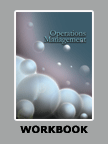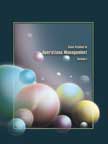Sears Logistics Management Practices




|
|
ICMR HOME | Case Studies Collection
Case Details:
Case Code : OPER026
Case Length : 13 Pages
Period : 1993 - 2003
Organization : Sears, Roebuck & Company
Pub Date : 2004
Teaching Note :Not Available
Countries : USA
Retail
To download Sears Logistics Management Practices case study
(Case Code: OPER026) click on the button below, and select the case from the list of available cases:

Price:
For delivery in electronic format: Rs. 400;
For delivery through courier (within India): Rs. 400 + Rs. 25 for Shipping & Handling Charges
» Operations Case Studies
» Case Studies Collection
» ICMR HOME
» View Detailed Pricing Info
» How To Order This Case
» Business Case Studies
» Case Studies by Area
» Case Studies by Industry
» Case Studies by Company
Please note:
This case study was compiled from published sources, and is intended to be used as a basis for class discussion. It is not intended to illustrate either effective or ineffective handling of a management situation. Nor is it a primary information source.
|
|
<< Previous
Background Note
|
Sears, Roebuck & Co. was founded by Richard Sears (Richard) in 1886. Richard
worked as an agent in the Minneapolis and St. Louis railway station in North
Redwood, Minnesota. He used his spare time to sell lumber and coal to local
people. In 1886, he once received a shipment of watches from one of the
neighborhood jewelers at Redwood Falls.
Richard bought the watches himself and sold them at a substantial profit to
other station agents. Recognizing the profit potential of this type of trading,
Richard soon ordered more watches for reselling. By the end of 1886, Richard had
started a watch retailing business, known as R.W. Sears Watch Company, in
Minneapolis.
|
|
In 1887, Richard relocated the company to Chicago and appointed a watchmaker,
Alvah C Roebuck (Roebuck) as his partner. In 1893, Richard renamed his
company 'Sears, Roebuck and Company.' In the early 1900s, Sears leased many
buildings in Chicago. In 1901, Sears started construction on a 40-acre, $5
million mail-order plant and office building on Chicago's West Side.
The mail-order plant with a floor space of more than three million square
feet was the largest business building in the world at that time. By 1905,
Sears succeeded in developing accurate catalog descriptions as well as its
high-quality merchandise. During the next two decades Sears witnessed a
significant growth in its mail order business with very few competitors.
|
|
In 1924,
General Robert Wood (Wood) was appointed as the President and Board
chairman of Sears. Wood started opening retail stores to compete with
chain stores that were rapidly spreading throughout the US and affecting
Sears' mail-order business. In 1927, Sears had 27 retail stores in
operation.
By the late 1920s, the urban residents in the US had begun to outnumber
rural residents, and city dwellers preferred to shop in retail stores.
Despite the Great Depression, Sears continued to open stores during the
1930s. In 1935, Sears began to open catalog sales offices in towns that
were too small to support retail stores. |
Later, the company launched an additional catalog operation -
the independent catalog merchant program - in which a person operated his or her
own store to sell Sears merchandise. By the late 1930s, the number of retail
stores carrying Sears merchandise had increased to 400. In 1941, Sears was
operating more than 600 retail stores...
Excerpts >>
|
|



